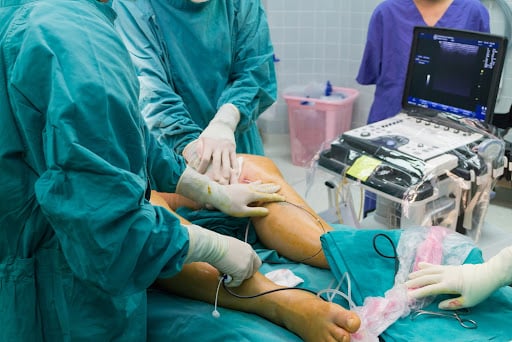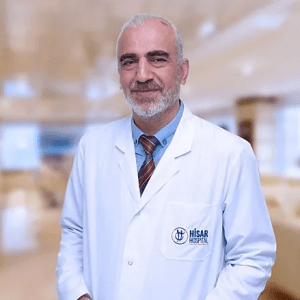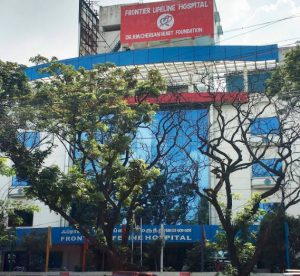Percutaneous Transluminal Angioplasty
What is Percutaneous Transluminal Angioplasty? A form of endovascular surgical treatment called percutaneous transluminal angioplasty (PTA) can be used to unblock a blood vessel. A small, flexible plastic tube or a catheter with a balloon at the end of it is used in the procedure. When it is in place, the tube is inflated for… Read More
Top Doctors For Percutaneous Transluminal Angioplasty Treatments
Top Hospitals For Percutaneous Transluminal Angioplasty Treatments
Percutaneous Transluminal Angioplasty
What is Percutaneous Transluminal Angioplasty?
A form of endovascular surgical treatment called percutaneous transluminal angioplasty (PTA) can be used to unblock a blood vessel. A small, flexible plastic tube or a catheter with a balloon at the end of it is used in the procedure. When it is in place, the tube is inflated for it to pen the blood vessel or artery so that normal blood flow is restored. The procedure is minimally invasive, and it is aimed at restoring blood flow to clogged arteries due to peripheral artery disease.

Why is Percutaneous transluminal angioplasty (PTA) necessary?
Fatty deposits can build up in the blood vessels, this build-up reduces blood flow, and in some cases, they even completely block the vessels. This build-up can cause a lot of health issues, and one of the biggest dangers is that a piece may break off or form clots which can cause a heart attack or stroke. The procedure can open these blocked arteries and reduce the risks.
How is the procedure done?
The radiologist inserts a balloon-type catheter in an artery in the patient’s arm or groin. To force the fatty deposits against the artery wall, the doctor will then repeatedly blow up the balloon for about a minute each time. The radiologists that are present take X-ray pictures in order to visualize the procedure and to know when the blockages are opened. When the blood is flowing freely, as seen in the X-ray, the balloon catheter is then taken out.

What happens before the procedure?
It is usually performed immediately after there has been a diagnostic leg angiogram that is done to find the location of the fatty build-up. It may also be done the following day.
During the procedure
A small incision is made on the thigh allowing access into the femoral artery. A guide wire is inserted into the artery. Under the guidance of X-ray video, the wire is threaded to the site of the blockage. The wire is pushed to the obstruction and sheathed in a small tube known as a catheter. At the tip of the catheter is a little balloon that has collapsed. The balloon catheter is guided to the location of the blockage.
Then, the balloon is then inflated slowly with a pump that is filled with a dye, flattening the plaque against the artery wall. The function of the dye is to contrast the artery so it will be visible on the monitor screen. The balloon is inflated several times until the blockage is opened, and the inflation may last from 30-60 seconds each time. It is noteworthy that the inflation may cause some discomfort to the patient, but it usually goes away on deflation of the balloon. The balloon is then withdrawn, and pictures are taken to ensure that the blood is flowing freely and smoothly. If it is not, the balloon is used again.
The catheter and wire are removed once the blockages have been removed and blood is flowing well. A small tube that is called a sheath may stay in the artery after the procedure for about 2-4 hours; the sheath is usually connected to a monitoring system. The monitoring system is used to ensure that the blood is flowing freely and sometimes it is left overnight. The entire process lasts approximately an hour and a half.
After the procedure
The patient is taken to a recovery area or a hospital room. They are placed on their backs while the sheath is in place; with the head of the bed tilted up a little, the patient is advised to rest. If the patient feels any back pain, the doctor may prescribe medication to handle it. When it is safe to remove the sheath, the doctor or the nurse will apply pressure to the area for about 20-30 minutes. After the removal, a sandbag and dressing may be applied to the area. The patient is usually confined to bed rest for another twelve hours. The nurse also raises the head of the bed a little higher after a few hours for the patient’s comfort. The patient is then free to go home the next day.
What are the benefits of angioplasty?
Some of the benefits of angioplasty include:
- It has fewer risks and costs less than a surgical procedure
- There are not many scars; there is a wound from where the catheter enters and a smaller wound from the IV line
What are the complications and risks of angioplasty?
It is rare to have serious complications after an angioplasty. Complications happen in about one in a hundred procedures. This number may even be lower and majorly depends on the individual circumstance surrounding the surgery. Some risks that can be seen in angioplasty include:
- Heart attacks
- Stroke
- Bleeding
- Chest pain
- Blood clots
- Blood vessel damage
- Abnormal heart rhythm
The risks increase encountered in the procedure increase with age. It is also higher in individuals with several blocked arteries, kidneys, or heart failure.
Recovery
The individual would need to stay at the hospital overnight or for several hours in order to properly recover from angioplasty. The health care provider will also advise the patient on the level of activity they should be involved in and the medication to be taken during the recovery time. The patient should get loads of rest and drink a lot of fluids. They may need blood thinners and aspirin after the procedure. It is important to take the drugs as prescribed and not miss any doses. The patient should be able to resume work after about a week of coronary angioplasty. Other angioplasty procedures could finish faster.
When should the doctor be called?
There is usually a follow-up visit after the individual is discharged, but it is very important to contact the healthcare provider if any of these signs are seen:
- There is a color change in the patient’s leg
- There is pain or warmth at the catheter sites
- There is bleeding from the sites
- Infection sets in



























































































































